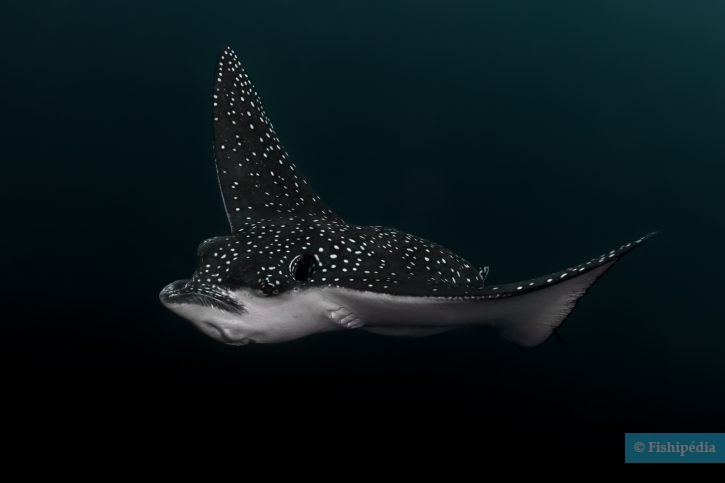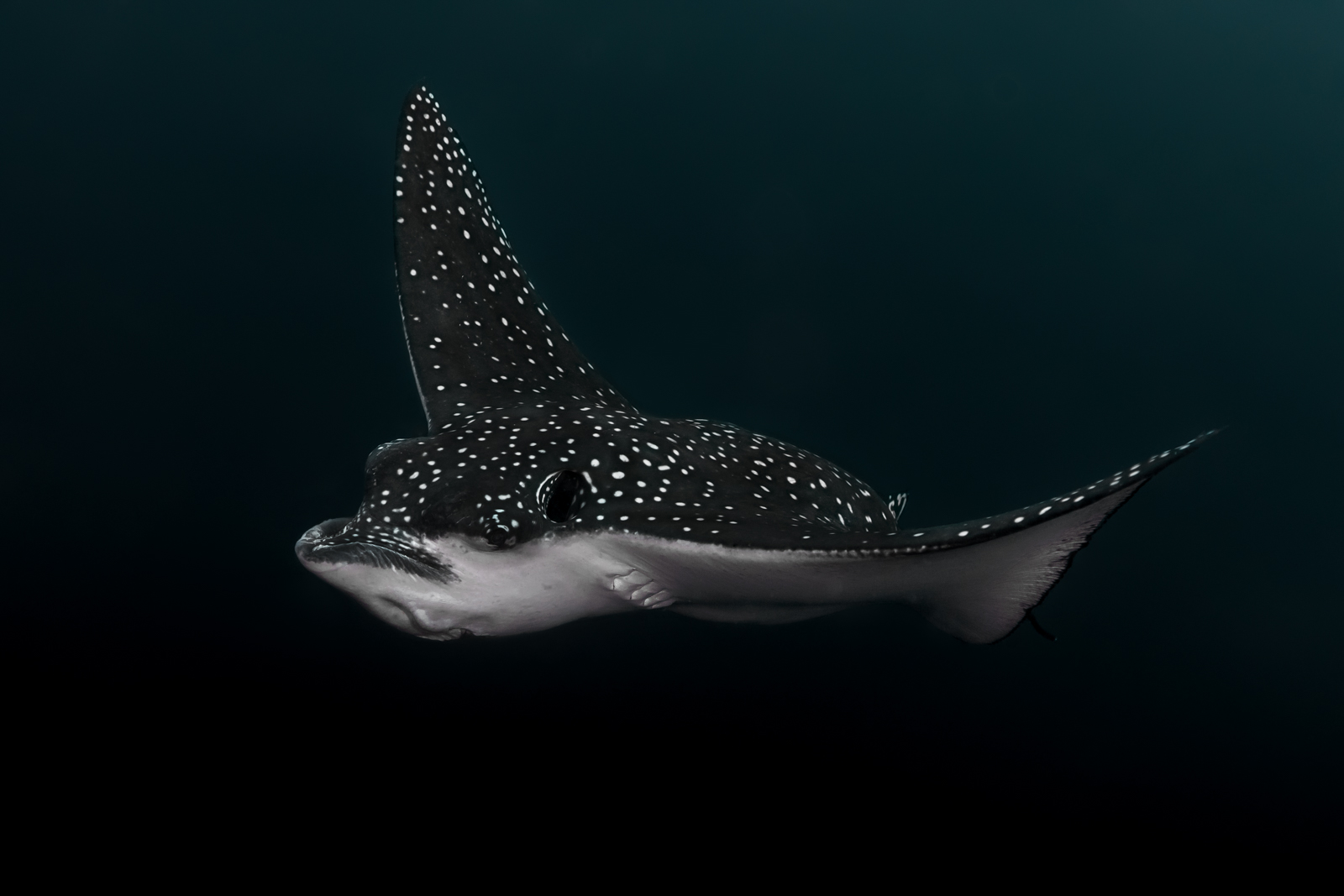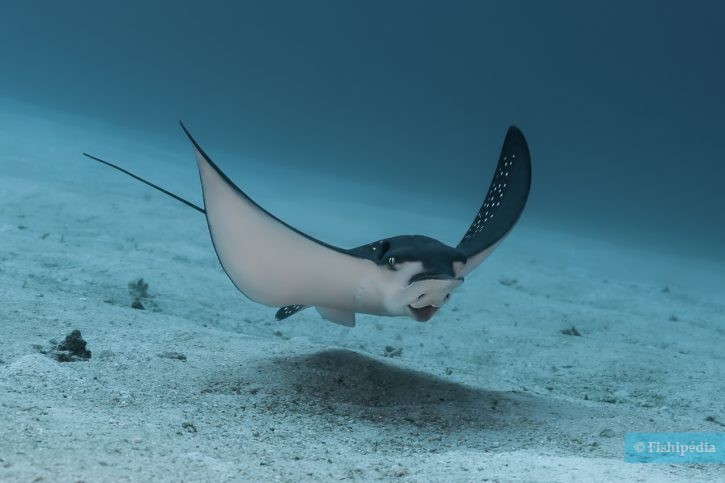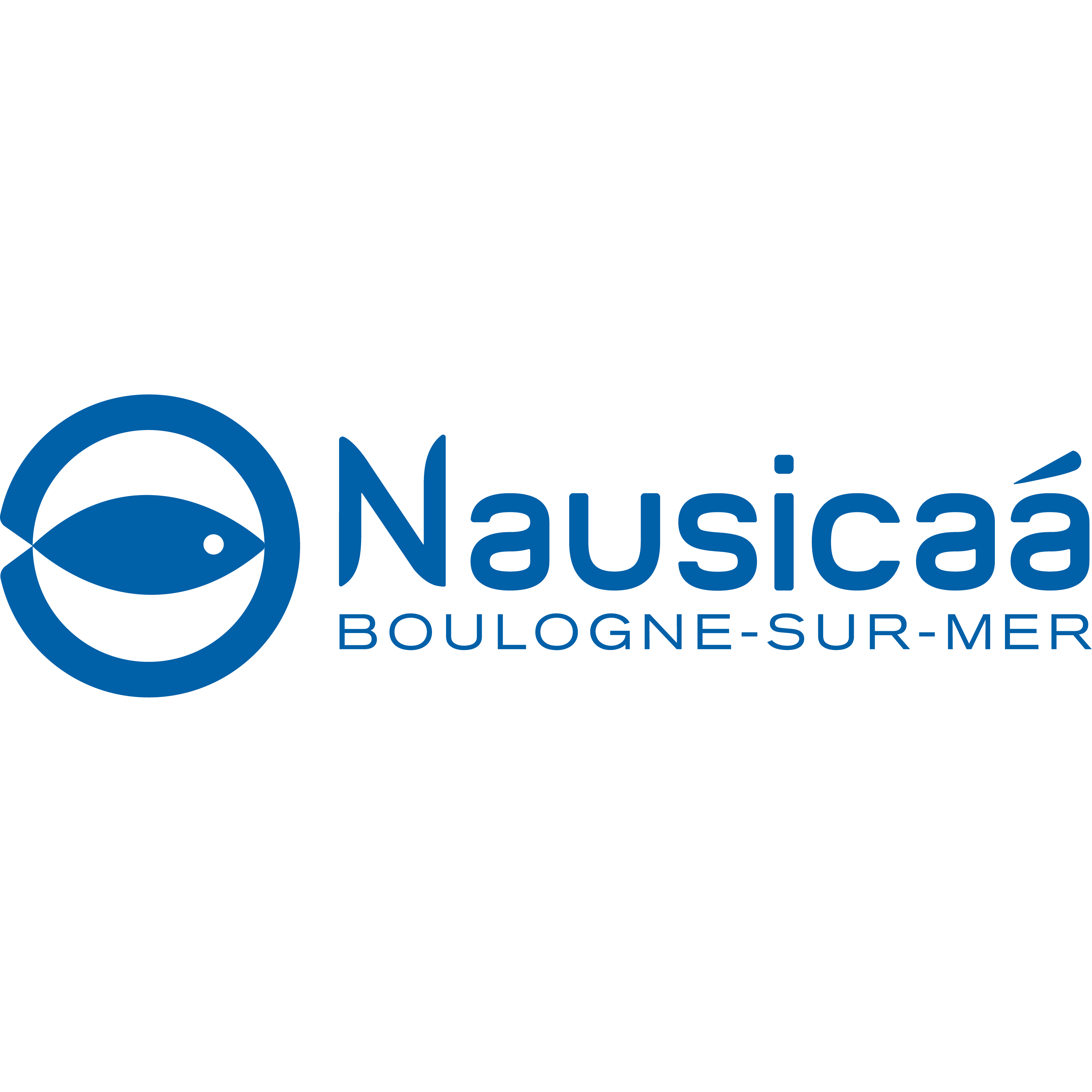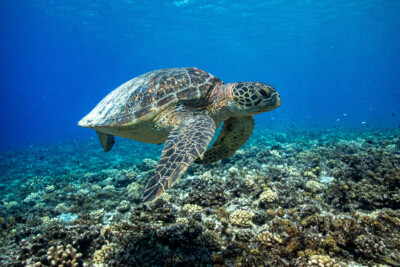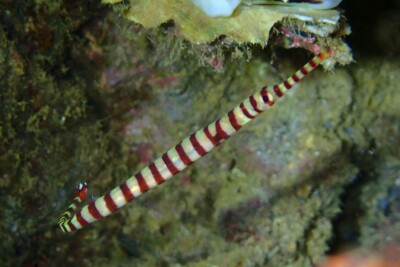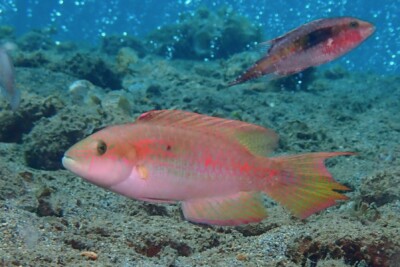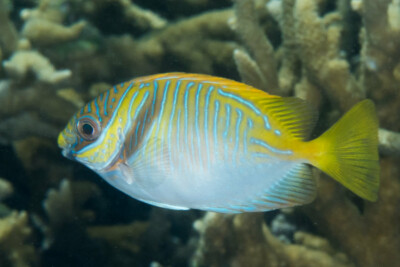Introduction
The spotted eagle ray (Aetobatus ocellatus), is a large ray found in the coastal and estuarine areas of the Indo-Pacific. Easily recognized by its dark back covered with white spots, it can reach over 3 m in wingspan. Long overexploited, it is now classified as endangered, being a victim of both targeted fishing and accidental captures.
Who is it?
Morphology
-
Type
-
Average size180 cm
-
Maximum size300 cm
-
Patternponctuations
-
Type
-
Average size180 cm
-
Maximum size300 cm
-
Patternponctuations
How to recognize This fish ?
This species can reach between 180 and 300 cm in disc width, with a weight exceeding 200 kg. The upper body is black to gray-green, scattered with small white spots. The underside is light. Its long tail, which can be up to three times the disc width, bears one or more venomous spines. Its dentition consists of dental plates arranged in a single row, adapted for crushing hard-shelled prey.
Sexual dimorphism
There is no marked dimorphism between males and females, except for size: females are on average larger, reaching sexual maturity between 150 and 160 cm in disc width, compared to 100 to 130 cm for males.
Behaviour & Life cycle
-
dietcarnivorous
-
Sociabilityliving in a group or alone
-
territorialNo
-
Way of livingdiurnal
The spotted eagle ray is an excellent swimmer that spends most of its time in open water above sandy bottoms, searching for food. It primarily feeds on crustaceans, mollusks, worms, cephalopods, and benthic fish. It uses its powerful jaws to crush the shells of crabs, clams, and oysters. Usually living solitary or in small groups, it also frequents lagoons and reef areas. When feeling threatened, it can use its venomous tail spine, potentially dangerous to humans.
Reproduction
-
Reproductionovovivipare
This species is ovoviviparous (aplacental viviparous). Females give birth to litters of 1 to 10 pups, usually 2 to 4. At birth, the young measure between 18 and 50 cm in disc width. Gestation lasts about 12 months, and reproduction likely does not occur every year. Juveniles initially inhabit lagoons and shallow areas before moving to more diverse habitats.
Life-threatening species
-
VenomousYes
Although not aggressive, this species can cause serious injuries with its venomous tail spines when handled or cornered. Accidents have been documented, but they remain rare and mostly occur in fishing or disturbance contexts.
Origin and distribution
Geographic distribution & Conservation
Aetobatus ocellatus is widely distributed in the Indo-Pacific Ocean, from the Red Sea and the coasts of East Africa to the Hawaiian and Pitcairn Islands, through India, Southeast Asia, Australia, and Polynesia. It is also present in the Eastern Pacific Ocean, from the Gulf of California to the Galapagos. Distinguishing it from other species of the genus has long led to identification errors, making its precise distribution still poorly understood.
Conservation status of populations (IUCN)
What is its habitat?
Natural environment characteristics
-
Temperature24 - 29 °C
-
Depth1 - 60 m
Biotope presentation
The spotted eagle ray mainly frequents coastal areas, often at depths of less than 60 m, but can descend to 90 m. It can be found in lagoons, estuaries, seagrass habitats, and sandy bottoms along coral reefs. It sometimes ventures offshore, above the continental shelf.
Species of the same biotope
To go further
Sources & Contributions
Participation & Validation
The Fishipedia team and specialist contributors are committed to providing high-quality content. However, although the information comes from scientific sources or testimonials from specialists, the cards may contain inaccuracies.

Benoit Chartrer
Translation
Translation done with the valuable contribution of our translators, who make this information available to a wider audience. We sincerely thank them for their commitment.

Marine Kassel
Scientific partners
Tags
#Aetobatidae
#Aetobatus
#barrière de corail
#fonds rocheux
#fonds vaseux
#herbier
#zone mixte
#Ray
#Bay of Bengal
#Persian Gulf
#Great Barrier Reef
#mer d'Oman
#Philippine Sea
#Sea of Japan
#Red Sea
#South East Asian Seas
#Indonesian seas
#East Indian Ocean
#western Indian Ocean
#Réunion
#New Caledonia
#French Polynesia
Species of the same biotope
